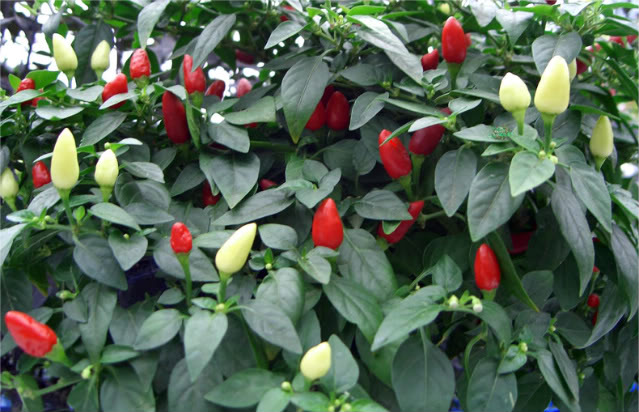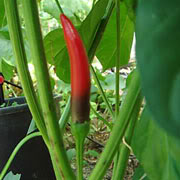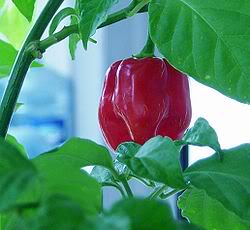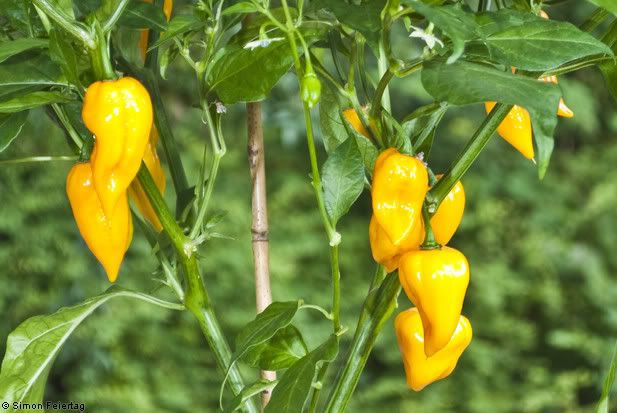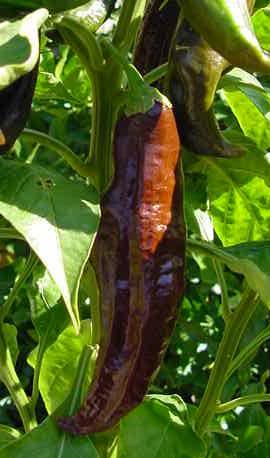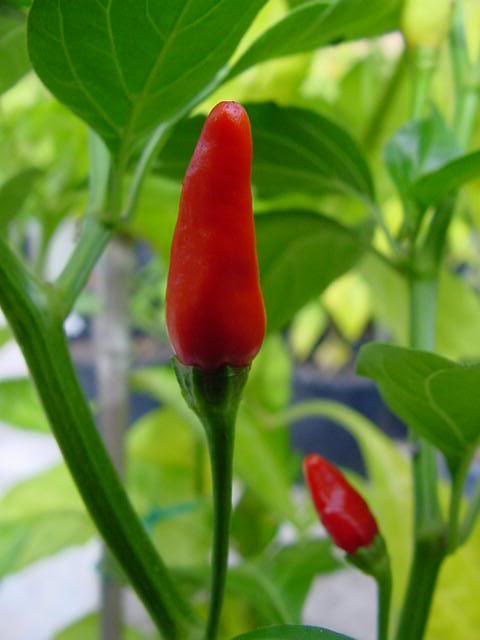Again depending on the time of year, your location and amount of light available you can keep the plants on you windowsill, in the greenhouse or under artificial lighting. Pepper plants love light, so the more they get the faster and stronger they will grow. If space is an issue inside then I can highly recommend one of the many mini greenhouses available. You can pick these up for only a few pounds and while they may not last forever they will certainly protect you chilli plants in early spring.
Depending on the variety you will most likely need to re-pot the chillies on again in a few weeks time. It is a good idea to avoid potting on to early as there are many theories that potting on too early into too big a pot focuses the plants growth on growing the roots rather than stems, leaves, flowers and ultimately chillies. A general rule of thumb is to only do this when roots are appearing through the drainage holes at the bottom of the pots.
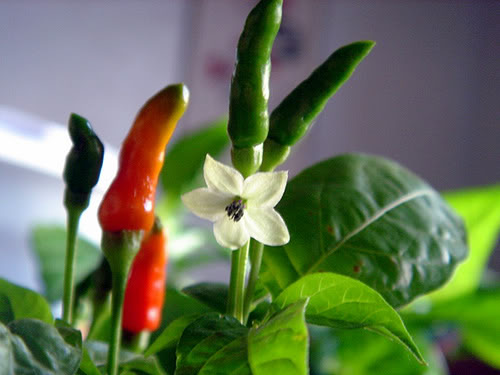
Once the risk of frost passes you can put the plants outside. Initially you might want to harden them off by placing outside for just a few hours a day. This will get the plants used to the direct sunlight and wind that they may not have experienced so far during their indoor life.
During these early stages of growth your plants can be particularly susceptible to pests like aphids. Aphids you can spray the beasts using 50/50 milk and water. The fat in the milk suffocates them.
When to feed chilli plants
One of the most asked questions is how often to feed them and what with? In the early stages and while the weather is quite mild I just give them a bit of tap water every 2-3 day or whenever the soil is looking dry on top. As the summer temperatures increase I will increase this to once a day.
Once the flowers start to flower I introduce a few drops of liquid tomato food into their water during every other watering. I use half the dilution strength recommended for tomato plants. Doing so gives the plants the extra energy required to keep producing fruit over the summer months.
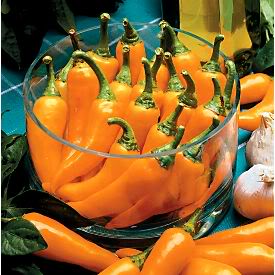
Chilli plant flowers and fruit
As your pepper plants begin to mature you will start to notice flowers appearing on your plants. This is the sign you have been waiting for as it means that your first chillies are not that far off. All that stands between you and fresh chilli pods is pollination.
Be aware that as was the case with germination if you are growing cayenne peppers the plants will flower and fruit much earlier than varieties such as Habanero, scotch bonnet or Naga. These slower varieties require much more heat and light and our best kept in a conservatory or greenhouse to ensure they fruit as soon as possible.
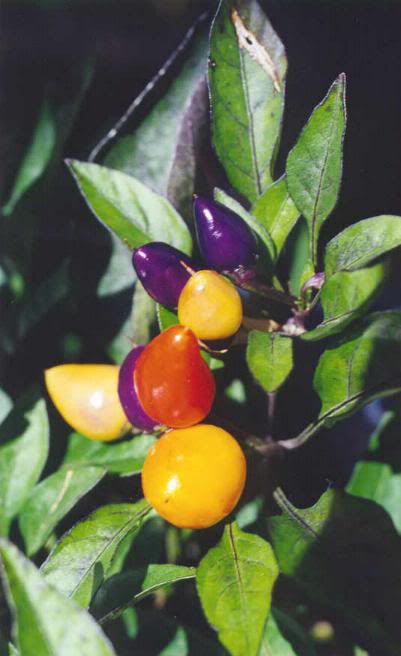
Pollination will be taken care of naturally by bees and other insects if you plants are kept outside. If grown inside your plants may suffer from flower drop in which case you may want to consider hand pollination. Don’t worry, this is not as sordid as it may sound. All you need to do is wait until you have a few flowers on your plants then lightly rub your little finger inside the flower heads on your plants. Alternatively use a small artists paint brush or a cotton bud. This will do the bees job of moving pollen around from flower to flower.
Eventually you will see that some of the flowers will go brown and drop off. This is usually no need for alarm as the cause will be a chilli pushing its way through the flower. All you need to do now is to keep up the water/food and wait for your chillies to ripen.
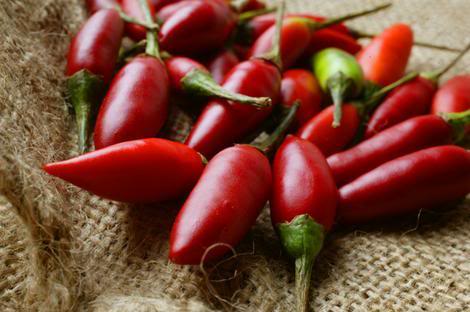
Depending on the variety you will most likely need to re-pot the chillies on again in a few weeks time. It is a good idea to avoid potting on to early as there are many theories that potting on too early into too big a pot focuses the plants growth on growing the roots rather than stems, leaves, flowers and ultimately chillies. A general rule of thumb is to only do this when roots are appearing through the drainage holes at the bottom of the pots.

Once the risk of frost passes you can put the plants outside. Initially you might want to harden them off by placing outside for just a few hours a day. This will get the plants used to the direct sunlight and wind that they may not have experienced so far during their indoor life.
During these early stages of growth your plants can be particularly susceptible to pests like aphids. Aphids you can spray the beasts using 50/50 milk and water. The fat in the milk suffocates them.
When to feed chilli plants
One of the most asked questions is how often to feed them and what with? In the early stages and while the weather is quite mild I just give them a bit of tap water every 2-3 day or whenever the soil is looking dry on top. As the summer temperatures increase I will increase this to once a day.
Once the flowers start to flower I introduce a few drops of liquid tomato food into their water during every other watering. I use half the dilution strength recommended for tomato plants. Doing so gives the plants the extra energy required to keep producing fruit over the summer months.

Chilli plant flowers and fruit
As your pepper plants begin to mature you will start to notice flowers appearing on your plants. This is the sign you have been waiting for as it means that your first chillies are not that far off. All that stands between you and fresh chilli pods is pollination.
Be aware that as was the case with germination if you are growing cayenne peppers the plants will flower and fruit much earlier than varieties such as Habanero, scotch bonnet or Naga. These slower varieties require much more heat and light and our best kept in a conservatory or greenhouse to ensure they fruit as soon as possible.

Pollination will be taken care of naturally by bees and other insects if you plants are kept outside. If grown inside your plants may suffer from flower drop in which case you may want to consider hand pollination. Don’t worry, this is not as sordid as it may sound. All you need to do is wait until you have a few flowers on your plants then lightly rub your little finger inside the flower heads on your plants. Alternatively use a small artists paint brush or a cotton bud. This will do the bees job of moving pollen around from flower to flower.
Eventually you will see that some of the flowers will go brown and drop off. This is usually no need for alarm as the cause will be a chilli pushing its way through the flower. All you need to do now is to keep up the water/food and wait for your chillies to ripen.


